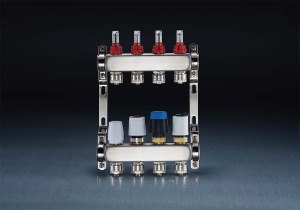2025-08-01
Stainless steel manifolds play a crucial role in various industries, from automotive to industrial applications, due to their unique blend of strength, corrosion resistance, and versatility. They serve as central distribution points for fluids or gases, directing them into multiple outlets for more efficient control and distribution. Over the years, the development of stainless steel manifolds has evolved to meet the increasing demands for durability, efficiency, and adaptability in modern systems.

Stainless steel, known for its high resistance to corrosion and staining, was discovered in the early 20th century. It wasn't until the 1920s, however, that stainless steel began to be used in industrial applications, thanks to its enhanced durability compared to traditional steel.
Initially, stainless steel manifolds were primarily used in applications where rust resistance was crucial, such as in chemical processing and pharmaceutical industries. These early manifolds were simple in design, primarily serving as connection points to route fluids from one location to multiple destinations. Their primary function was to distribute or collect liquid or gas without compromising the integrity of the system.
In the early days, stainless steel was considered an expensive material, so its use in manifolds was often limited to high-end or specialized applications. As stainless steel manufacturing processes became more refined and efficient, the cost of production dropped, making stainless steel manifolds more accessible to a broader range of industries.
The development of stainless steel manifolds accelerated significantly with improvements in material science and manufacturing techniques. In the 1950s and 1960s, advances in steel alloy composition, particularly the introduction of alloys like 304 and 316 stainless steel, revolutionized the durability and strength of these manifolds. These alloys offered not only corrosion resistance but also improved performance under extreme temperatures and pressures.
With the advancement of manufacturing technologies like CNC (Computer Numerical Control) machining, it became easier to create more complex designs for stainless steel manifolds. This allowed manufacturers to offer custom solutions that better met the specific needs of various industries, whether for high-temperature systems in the automotive sector or pressure-sensitive applications in aerospace and energy.
The integration of 3D modeling and CAD (Computer-Aided Design) also allowed for more precise designs and faster prototyping. Engineers were able to design manifolds with more complex geometries and tighter tolerances, which increased their efficiency and adaptability. This period marked the beginning of stainless steel manifolds being used in an even wider variety of industries, including oil and gas, food and beverage, and energy production.
As industries evolved, so did the role of stainless steel manifolds. Today, these manifolds are designed with higher functionality and increased performance capabilities. Modern manifolds come in various configurations and designs, including:
Multiple Inlet and Outlet Ports: Manifolds are now designed with multiple ports, allowing for more precise flow control and distribution. This is especially beneficial in systems that require the simultaneous distribution of various fluids or gases to different sections of a process.
Compact and Lightweight Designs: As systems continue to scale down in size while becoming more efficient, manifolds have also become more compact and lightweight. This has enabled their use in industries like automotive engineering, where space and weight are significant concerns.
Enhanced Pressure and Temperature Resistance: With the introduction of more advanced alloys and finishes, stainless steel manifolds are now capable of withstanding higher pressures and extreme temperatures. These manifolds are indispensable in high-performance applications, such as steam generation, nuclear energy, and oil refining, where safety and durability are critical.